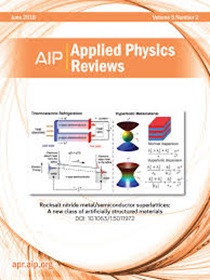控制微流体装置中的微泡形成:实验、理论和数值策略的进展
IF 11.9
1区 物理与天体物理
Q1 PHYSICS, APPLIED
引用次数: 0
摘要
微流控装置在产生微气泡方面越来越受欢迎,因为与传统方法(如超声和合并)相比,这些装置提供了对微气泡尺寸的更大控制。微加工技术的最新发展促使人们对传统的微流体装置进行了一些修改,这使得人们可以“设计”与特定生物医学应用相关的微气泡。追求微泡工程的改进需要对微流体系统中的流体流动行为有详细的了解,这就是这项工作的动机来源。这项工作提供了广泛的审查理论,实验和数值研究报告在文献中,以了解微气泡的形成使用微流体装置。讨论了微泡形成过程中气液界面的演化、夹断机理以及约束对微泡尺寸和产率的影响。微泡直径预测的标度定律和微泡形成机制图提供了不同力相互作用的细节也进行了回顾。此外,还讨论了基于不同界面跟踪方案的微流控装置微泡形成CFD模拟的进展,以及提高微流控装置微泡产生速率的最新进展和策略。最后,我们概述了当前微流体系统需要改进以产生微气泡,这可以为微气泡工程的微流体领域的新研究铺平道路。本文章由计算机程序翻译,如有差异,请以英文原文为准。
Controlling microbubble formation in microfluidic devices: Advancements in experimental, theoretical, and numerical strategies
Microfluidic devices are becoming increasingly popular for producing microbubbles, as these devices provide much greater control over microbubble size compared to traditional methods such as sonication and amalgamation. Recent developments in microfabrication technologies have prompted several modifications in conventional microfluidic devices, which allow one to “engineer” microbubbles relevant to specific biomedical applications. The pursuit of improvements in microbubble engineering requires a detailed understanding of fluid flow behavior in microfluidic systems, which is where the motivation for this work originates from. This work provides an extensive review of the theoretical, experimental, and numerical investigations reported in the literature to understand microbubbles formation using microfluidic devices. The evolution of gas–liquid interfaces during microbubble formation, the pinch-off mechanism, and the confinement effect on microbubble size and production rate have been discussed. The scaling laws for the prediction of microbubble diameter and microbubble formation regimes maps providing details about the interplay of different forces have also been reviewed. Furthermore, the developments in CFD simulations based on different interface tracking schemes for microbubble formation in microfluidic devices, along with the recent developments and strategies to upscale microbubble production rate in microfluidic devices, have also been discussed. We conclude this review by outlining the need for current modifications in microfluidic systems to produce microbubbles, which can pave the way to new research in the field of microfluidics for microbubble engineering.
求助全文
通过发布文献求助,成功后即可免费获取论文全文。
去求助
来源期刊

Applied physics reviews
PHYSICS, APPLIED-
CiteScore
22.50
自引率
2.00%
发文量
113
审稿时长
2 months
期刊介绍:
Applied Physics Reviews (APR) is a journal featuring articles on critical topics in experimental or theoretical research in applied physics and applications of physics to other scientific and engineering branches. The publication includes two main types of articles:
Original Research: These articles report on high-quality, novel research studies that are of significant interest to the applied physics community.
Reviews: Review articles in APR can either be authoritative and comprehensive assessments of established areas of applied physics or short, timely reviews of recent advances in established fields or emerging areas of applied physics.
 求助内容:
求助内容: 应助结果提醒方式:
应助结果提醒方式:


